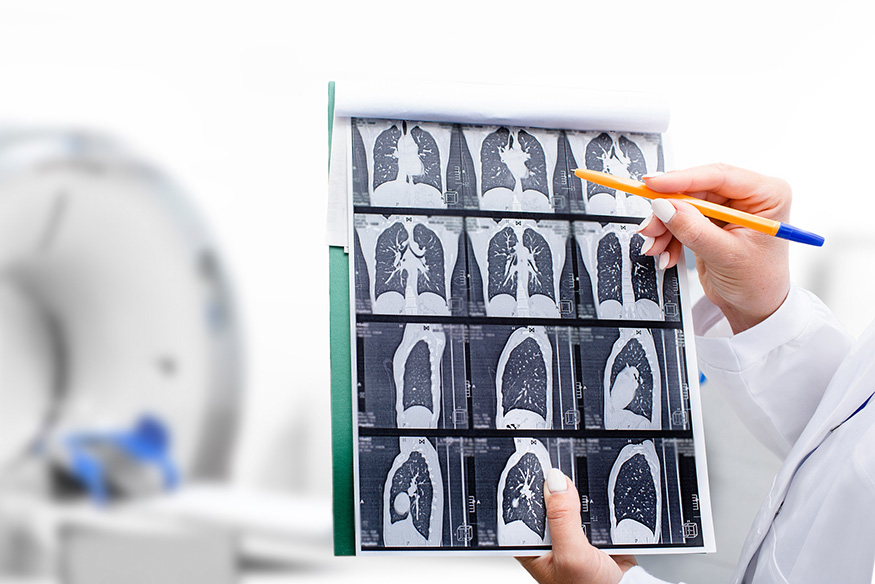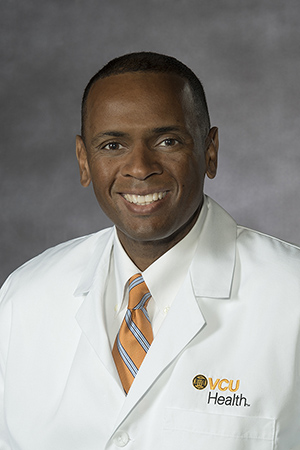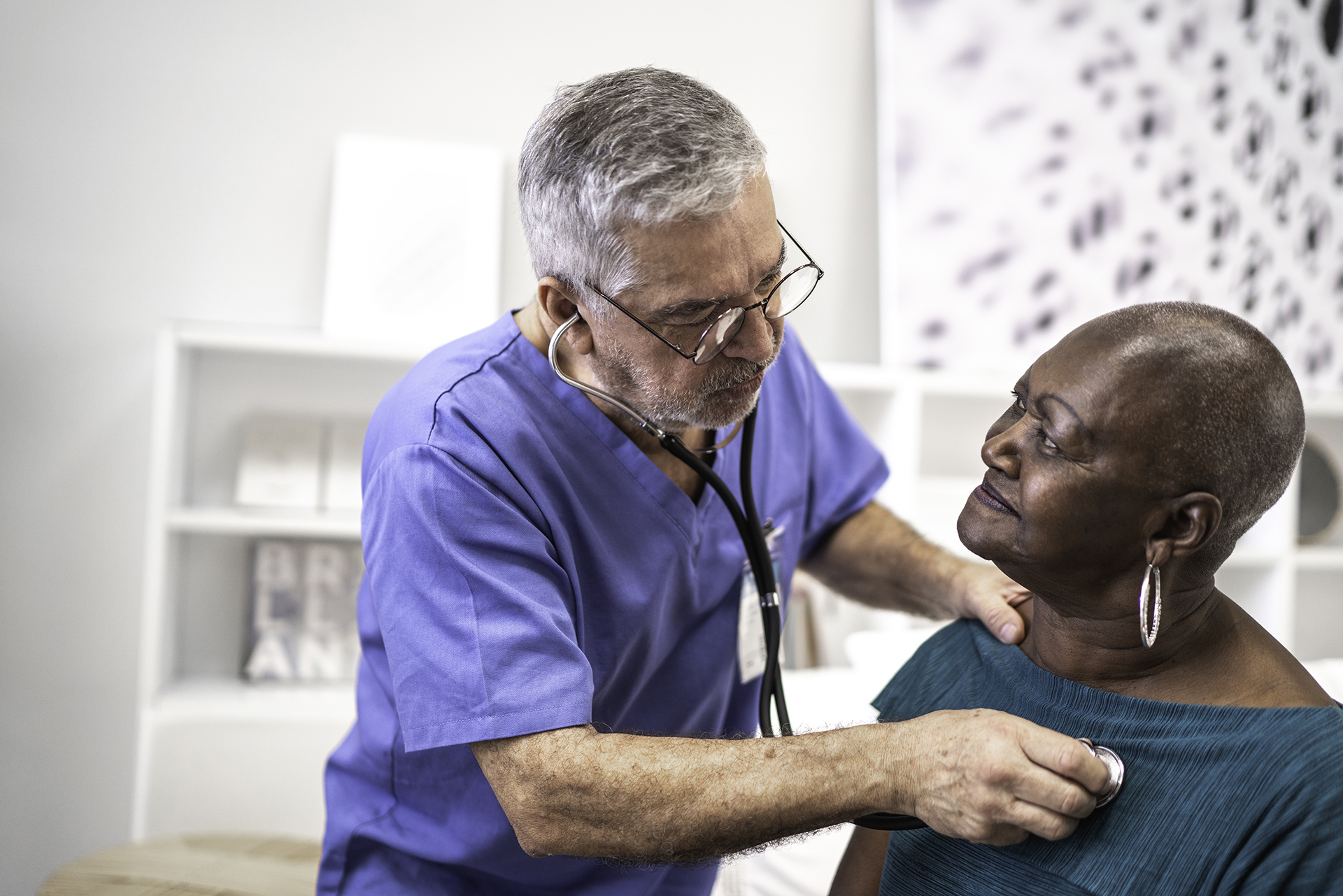Latest News
Research, Clinical, Community Engagement & Health Equity, Center News & Funding, Prevention & Control
The lung cancer care of the future: Innovations in early detection and targeted therapies
Nov 20, 2023
 Photo credit: iStock
Photo credit: iStock
Lung cancer care has improved dramatically over the past decade, thanks to advances in early detection, immune therapy, machine learning and an increased understanding that lung cancer treatment is not “one size fits all.”
Patrick Nana-Sinkam, M.D., a pulmonologist and the Linda Grandis Blatt Endowed Chair in Cancer Research at VCU Massey Comprehensive Cancer Center, shared some of the latest updates in this fast-moving field for Lung Cancer Awareness Month.
Early detection and high-risk populations
Early detection and treatment of early-stage disease is the most effective way to save lives from lung cancer. Fortunately, there is a quick and noninvasive screening test for lung cancer: a low-radiation CT scan that takes just minutes to complete. Despite this simple and effective method, only 4.5% of those eligible are screened for lung cancer in the U.S.; Virginia performs only slightly better at 7%.
 Patrick Nana-Sinkam, M.D.
Patrick Nana-Sinkam, M.D.
“We have to do better,” said Nana-Sinkam, who is also chair of the Division of Pulmonary Disease and Critical Care Medicine at VCU School of Medicine. “We need more effective and proactive strategies to reach those who are at highest risk. As an example, the Massey on the Move mobile health vans are providing critical cancer screening education, establishing trust and ultimately getting access to screenings for Virginians living in rural and underserved areas.”
This month, the American Cancer Society expanded lung cancer screening guidelines to include anyone age 50-80 with a smoking history of 20 pack-years (the equivalent of smoking 1 pack per day for a year), no matter how long ago they quit. The hope is that with more inclusive criteria, those who would not normally meet criteria – including underrepresented minorities and women – may be diagnosed earlier, preventing later-stage diagnosis.
“The guideline that the number of years since quitting no longer be considered a criteria for eligibility is an interesting one,” said Nana-Sinkam. “While there is decreased risk for lung cancer once a person quits, there is concern that some degree of risk remains. Exactly how this change will impact the number of cases detected at early stage and mortality is unclear.”
The use of e-cigarettes or vape pens, a practice heavily skewed towards teens and young adults, has not been around long enough for researchers to understand the long-term effects and potential risk for lung cancer. Studies do demonstrate that vaping can result in significant injury and inflammation of the lung.
“Do we know it has potential toxicity to the lungs? Absolutely,” said Nana-Sinkam. “Whether or not it causes cancer, we don’t quite know. But given the cases of lung disease we have seen as a result of these products, I strongly advise against vaping. Based on potential cancer-causing compounds found in in these products, there is concern over time that we may see an association with the development of lung cancer.”
While it’s important to screen people with a significant smoking history and encourage current smokers to quit, scientists are increasingly recognizing that lung cancer is not solely a disease of smokers.
“The majority of people diagnosed with lung cancer now are former smokers or never smoked,” said Sinkam. “Your risk factors of lung cancer go well beyond whether you smoked and how much; your environmental exposures, family history, your diet and access to nutritional foods, stress, all these things are important and can shape your risk for developing many diseases.”
Nana-Sinkam pointed to groups who are disproportionately affected by lung cancer, such as African American men, to illustrate the potential impact of these factors. “There are many possible reasons – uptake for screening is lower, these patients often don’t have access to targeted therapies or the standard of care they should be receiving – all of this results in higher rates of late-stage lung cancer and worse outcomes,” he said.
Looking toward a future without lung cancer
Immunotherapy and targeted therapies represent some of the biggest advances in cancer treatment and have had a major impact on the approach to treating lung cancer. While 20 years ago all lung cancers were treated the same, now specialists understand that “lung cancer” really represents a multitude of diseases, and targeted therapies can be applied to effectively treat tumors with certain genetic mutations. These revelations have served to drive our idea of personalized lung cancer treatment.
“We’re not only treating specific lung cancers with targeted therapies, we are developing the next generation of those targeted therapies to anticipate peoples’ acquired resistance to the current therapies,” said Nana-Sinkam.
Other innovations are revolutionizing our methods of cancer detection. Nana-Sinkam cited clinical trials investigating the effectiveness of blood tests to determine whether a spot on someone’s lung is cancerous, or of blood-based biomarkers to determine a person’s risk for multiple cancers.
“Artificial intelligence is also increasingly becoming part of the landscape,” said Nana-Sinkam. “In the last year, we’ve seen new software that uses machine learning to determine your risk of getting lung cancer based on a single CT scan. As we think about a combination of AI, targeted therapies and patient-first care, that comes together in my mind to likely curb a lot of lung cancer mortality.”
Despite the statistics – that lung cancer is the third most common cancer in the U.S. and the leading cause of cancer death – Nana-Sinkam is optimistic about the future of diagnosis and treatment. And he has reason to hope: one recent survey from the American Lung Association found that survival rates for lung cancer are improving.
“It’s an exciting time,” said Nana-Sinkam. “We still have significant work to do particularly in ensuring that all have access to early detection and appropriate treatment. Hopefully we’ll soon get to a point where we see even more significant decreases in mortality rates and a narrowing of the disparities that exist.”
Written by: Annie Harris
Related News

Get access to new, innovative care
Treatments in clinical trials may be more effective or have fewer side effects than the treatments that are currently available. With more than 200 studies for multiple types of cancers and cancer prevention, Massey supports a wide array of clinical trials.

Find a provider
Massey supports hundreds of top cancer specialists serving the needs of our patients. Massey’s medical team provides a wealth of expertise in cancer diagnosis, treatment, prevention and symptom management.
